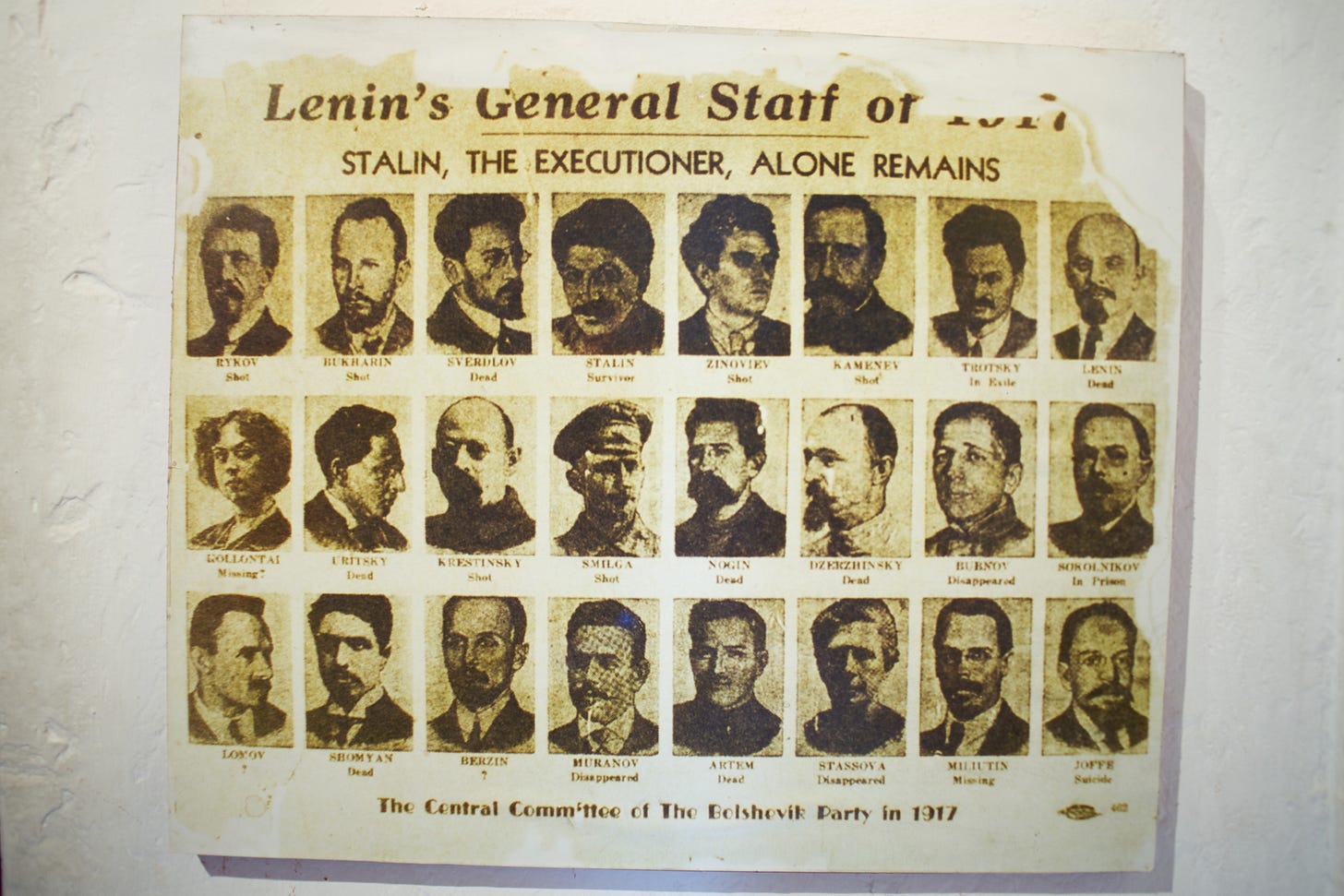Fight Against Stalinism Still Resonates

Holly Quilty’s article “Bolshevism vs. Stalinism”, recently published by Communist Revolution, got a lot of attention on Twitter/X. Stalinists, to no one’s surprise, offered the usual litany of childish memes and icepick jokes in response. The entire basis of their tendency, remember, is violence and character assassination in place of political argument, which they are utterly incapable of. The record of Stalinist “Communist” parties is a history of shameless capitulation to the bourgeoisie and attacks on the left. Incapable of learning from history, due to a culture of top-down centralization and mindless obedience to the party leadership, Stalinists repeat the same tired attacks on Trotsky as if it were still the 1930s.
Beyond the expected responses from Stalinists, there was a different type of comment. “stfu already nobody cares” said one user, who evidently cared enough to reply to the post. Another wrote, '“do you people ever shut the fuck up about stalin?? get over it my god”. The argument that the conflict between Stalin and Trotsky, between Stalinism and the Left Opposition, is irrelevant to politics today is a common one. Yet it’s an argument without merit—one that celebrates ignorance of history as a virtue. “Not to know what happened before you were born is to remain forever a child,” the Roman statesman and philosopher Cicero wrote. In fact, the question of Stalinism remains a vital question in the workers’ movement.
With capitalism incapable of solving any of society’s problems, workers and youth are increasingly looking for an alternative. One million Canadian youth say communism is the ideal economic system, according to a poll by the right-wing Fraser Institute. Rising interest in Marxism and communism is a welcome development, but it also raises the question: what is communism? According to bourgeois commentators and Stalinists alike, communism is synonymous with Stalinism. The truth is Stalinism represents the polar opposite of Bolshevism: a bureaucratic reaction that came to power due to the isolation of the Russian Revolution, following the failure of revolutions abroad, the country’s devastation, and widespread hunger and poverty after a civil war that included invasion by 21 foreign armies. The rise of a Stalinist-style bureaucracy is a potential danger for any workers’ revolution in an isolated country, surrounded by a hostile capitalist world.
The charge that studying the history of Stalinism and the degeneration of the Soviet Union is irrelevant today reflects a contempt for theory and the study of history in general. Alan Woods describes the revolutionary communist party as “the historical memory of the working class.” As communists, we study the history of the workers’ movement precisely to avoid repeating the mistakes of the past. The view that communists should “get over” Stalin is a bad-faith attack, which can only come from those who fear the lessons that might come from studying this history. The “communist” Stalin killed more communists than anyone, including Adolf Hitler. Refusing to examine why is the height of irresponsibility for anyone who calls themselves a communist.
To continue the disastrous political strategies of Stalinism today would be a recipe for disaster. The perspective of the parasitic Soviet bureaucracy under Stalin was guided by narrow nationalist determinations to secure their own privileges. For this reason, they played a counter-revolutionary role through most of the 20th century. A notorious case was the Stalinists’ crushing of the Spanish Revolution of the 1930s, guided by the Menshevik theory of “stages”—in which workers in backward countries must back the so-called national progressive bourgeoisie to achieve capitalism, after which socialism might be achieved in the distant future.
In practice, this meant tail-ending the bourgeoisie and destroying prospects for successful socialist revolutions. Perhaps the most significant example was the French revolution of 1968, when the Communists—as fleeing president Charles de Gaulle said—could have taken power. Instead, Stalinist leaders encouraged termination of the general strike in France, the greatest revolutionary general strike in history, and diverted the movement into an election in which de Gaulle emerged victorious. There are countless other examples in the history of the workers’ movement of Stalinist policies leading revolutionary movements to defeat.
Those who call themselves Stalinists (or “Marxist-Leninists”, etc.) today represent only a fringe element in the workers’ movement, yet their class collaborationist outlook still causes harm. In revolutionary situations, their role is always disastrous. Consider the defeat of the Spanish Revolution, in which Stalinists led a wave of counter-revolutionary terror that paved the way for victory of Franco’s forces; or the Iranian Revolution of the 1970s, in which the Communists called for support of Khomeini even as workers were establishing workers’ councils. To mindlessly cheer similar class collaborationist policies today would only lead to further defeat. That’s why communists need to comprehend what Stalinism is and what it represents.
The best place to start in understanding Stalinism is Leon Trotsky’s magnum opus The Revolution Betrayed. If you’re a communist, sooner or later the question will arise: “What about the Soviet Union? What about Stalin?” Trotsky is the only thinker who provided a Marxist analysis, based on historical materialism, of the rise of the Soviet bureaucratic caste under Stalin. In addition to Quilty’s article for Communist Revolution, Rob Sewell also wrote a great piece on the the distinction between Bolshevism and Stalinism. These are excellent sources for young communists to learn the real history of our movement.



